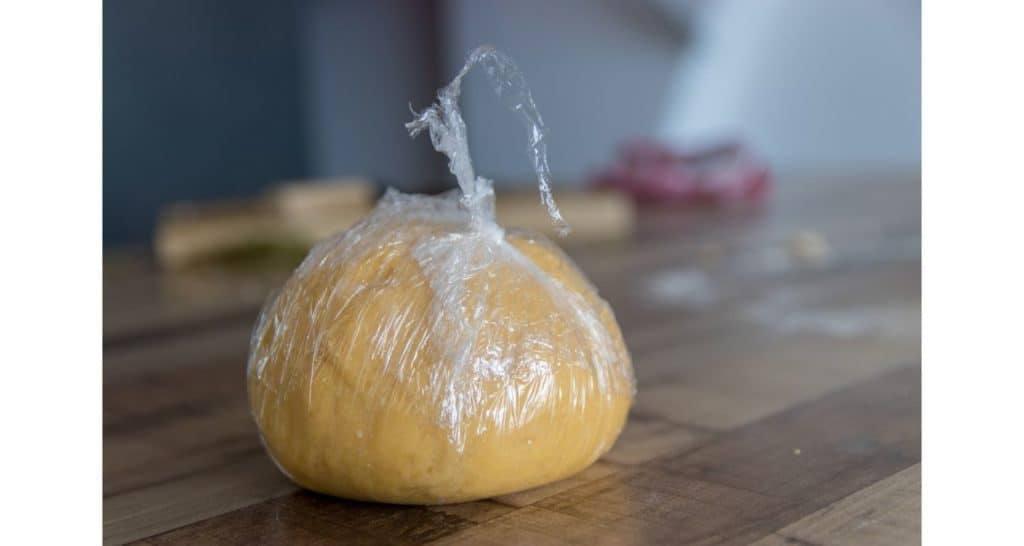It’s family pizza night! You’ve been making dough all day and you realize there’s no chance you and your family will be able to eat enough pizzas to use up all your dough.
Instead of letting your dough go to waste, can we freeze it and save it for later? So does freezing dough kill the yeast?
Yeast dough can be frozen since yeast can survive freezing temperatures. Yeast will die if exposed to higher temperatures but will go dormant in colder temperatures. Typically dough with yeast can be frozen for up to 2 months. However, it’s best to use the dough sooner than later as the dough quality and texture will degrade over time.
Freezing dough is a great trick whether you’re planning ahead or trying to figure out what to do with leftovers.
You frontload all the work by mixing ingredients, kneading, and allowing your dough to do its first rise ahead of time. Then, when you’re ready to make pizza or bread, you can thaw your dough and bake away.
How To Freeze Yeast Dough
Make sure that the ingredients are fully incorporated before freezing the dough. Knead the dough. Allow the dough to rise per the instructions of the recipe. Once your dough has doubled in size, you can freeze it.
Punch it down and shape it as required by the recipe you are following. Portion out your dough before you freeze it.
For instance, you may want to measure out 14-ounce balls of pizza dough if you’re planning to bake 14-inch pizzas. For a loaf of bread, you may want to freeze it in a log shape. For dinner rolls, you might measure out 2 ounces per piece.
Now it’s time to freeze the dough.
Place your dough on a parchment-lined baking sheet for about an hour. This step is important because your dough may rise a little bit more when it first enters the freezer.

Once your dough is frozen, wrap it in plastic wrap and then place it into an airtight container or resalable plastic bag. Label it with today’s date to know how long it is frozen for in the future.
Store for 2 to 8 weeks depending on the dough ingredients. Scroll down for further details on freezer shelf life of dough.
Will Dough Rise In The Freezer?
Dough will not rise in the freezer. Freezing dough temporarily pauses the proofing process. This means that the yeast is dormant due to the cold temperatures. As long as the yeast was alive before the dough was frozen then the yeast will reactive when the dough is thawed out.
Will Frozen Dough Rise When It Thaws?
Frozen dough will rise when it thaws out. If your yeast was alive before you froze your dough, your dough will rise when it thaws. As long as your dough has not been frozen for more than 2 to 8 weeks depending on the type of dough you’ve made, your thawed dough will rise.
For best practices on thawing and proofing frozen dough, please scroll down.
How Long Can Dough Be Stored In The Freezer?
Dough can be stored in the freezer for 2 to 8 weeks.
Even if the dough can be stored up to or beyond 8 weeks, the dough will lose some freshness and rising power if you wait this long. Not to mention the texture and flavor of the dough may be altered due to the ice crystals that form in and on the dough from the freezer.
Doughs that do not contain dairy can last up to 8 weeks although some bakers recommend freezing for no more than 4 weeks.
Egg-based doughs like challah can be frozen for up to 3 weeks.
Brioche doughs can be frozen for up to 2 weeks.
How To Thaw And Proof Frozen Dough?
There are a number of methods for thawing frozen dough. Depending on how much time you have you can choose the right method for you.
Thawing Frozen Dough Overnight In The Fridge
The best way to thaw your dough is overnight in the refrigerator. Here are the general steps for thawing frozen dough in the fridge:
- Place frozen bread in fridge overnight for 8 to 12 hours
- Remove plastic wrap or covering to bread
- Punch down, knead, and lightly oil dough for a second rise
- Cover with a towel or cloth
- After an hour the dough will be ready to bake
Thawing Frozen Dough On The Counter
Another option for thawing dough is to leave it on the counter of a warm area in your home. Here are the steps for thawing frozen dough using room temperature air:
- Remove dough from freezer and peel off plastic wrap
- Place dough into lightly oiled bowl
- Cover both all sides of dough with oil
- Place clean towel or cloth over bowl
- Let dough sit in a warm space within home
- The dough will thaw and rise over a period of 2 hours
This method is faster than thawing overnight in the fridge but it’s a little trickier. If the air temperature is too cool then the dough may not thaw out in 2 hours. Not to mention leaving dough out for longer than 2 hours can be risky with bacteria growth.
This is a great option if you have a small batch of dough and have a warm place to let your dough thaw and rise.
Thawing Dough In Cool Water
One more option for thawing dough is to thaw it in cool water. This method works well if you’re in a hurry, although it requires a little bit more work.
- Make sure the dough is completely covered in plastic wrap
- Place the frozen dough into a bowl of cool water
- Check to make sure water is not seeping into the wrapped dough
- Change the water every 30 minutes until the dough is thawed
- Once dough is thawed, place the dough into a lightly oiled bowl covered with a towel or cloth
- After an hour the dough will be ready to bake
This method is the quickest and safest method out of all three. However, water can seep into the dough if it’s not securely wrapped which will ruin your dough.
Another thing to keep in mind is that the water temperature needs to be cool. Warm or hot water can kill the yeast which will prevent the dough from rising.
Final Thoughts
If you’ve got extra dough, it can be stored for future use in the freezer. Depending on the type of dough, you can keep it frozen for up to 2 to 8 weeks.
The yeast will survive the freezing temperatures and reactivate when the dough is thawed. To thaw the dough, the best approach is to plan ahead and defrost overnight in the refrigerator. Set it and forget it.
So the next time you make extra dough, don’t let it go to waste! Freeze it and enjoy later. Future you will thank you!

